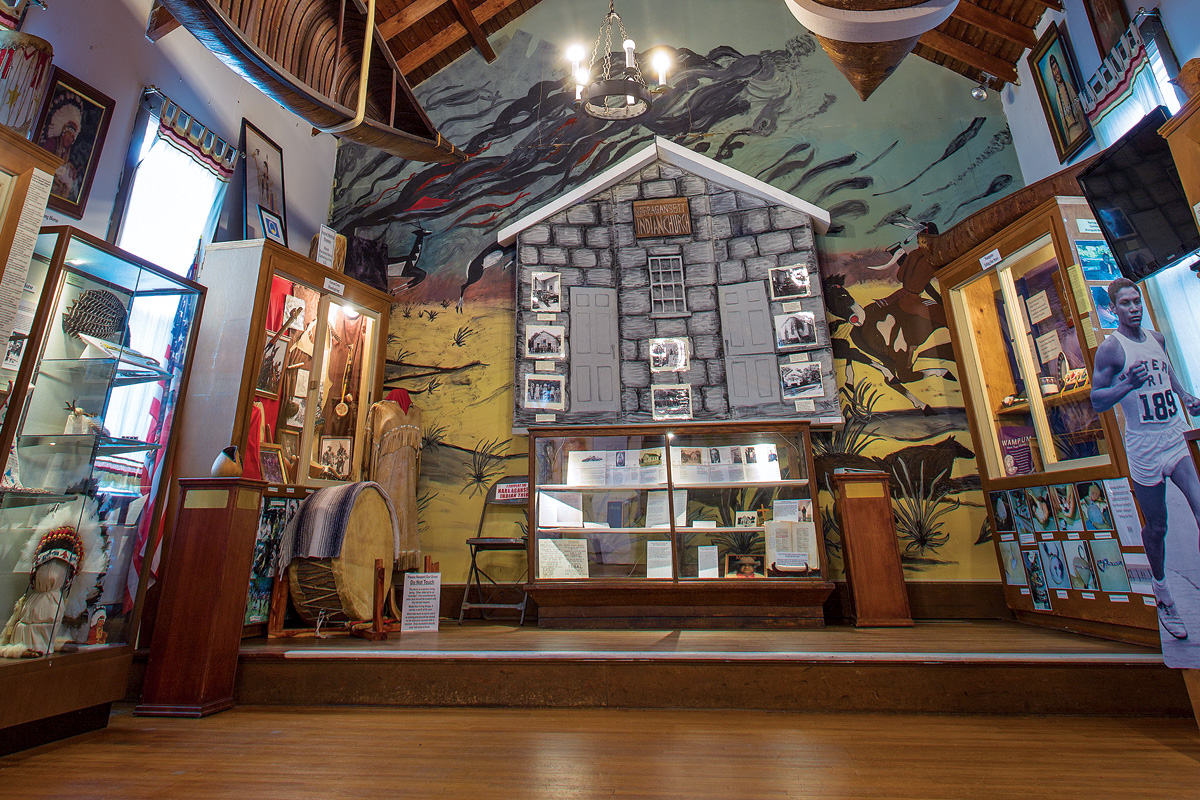The Tomaquag Museum, currently in Exeter, will soon have a new home in Kingston. Photo from rimonthly.com.
The Tomaquag Museum, which commemorates and celebrates the history of indigenous people in Rhode Island, recently announced that it will be moving to Kingston.
Currently located in Exeter, the museum will break ground in Kingston in 2022. The buildings will be built on 18 acres of land owned by the University of Rhode Island, which they received after reaching a deal with the University.
Ryan Carrillo, URI’s director of planning and real estate development, said that the conversations around the Tomaquag Museum moving to Kingston began many years ago.
The move-in process has been divided into two phases for the purposes of construction, during which the buildings and their utilities will be built, according to Lóren Spears, the museum’s director.
Spears said that the museum is looking to build four separate buildings on the land. One building will be the main museum; one building will be an education center including classrooms that will host evening programs and workshops; one building will be a research center; one building will be the Indigenous Empowerment Network Building that will include an art studio and a cafe.
In addition to the buildings, the museum will have traditional indigenous gardens, consisting of corn, beans and squash, as well as examples of traditional Native homes.
“We wanted it to still be rural,” Spears said. “We came up with this space because across the street is a river, and people can see that the 18 acres we have gives us plenty of room to walk around and create paths in which we can talk about the traditional ecological knowledge of indigenous peoples and of this land.”
The first two buildings will be built as part of phase one of the move-in process, and the latter two will be built as part of phase two, according to Spears. She expects that all four buildings will cost around $4 million, taking $2.8 million for phase one and $1.2 million for phase two.
URI’s Board of Trustees decided this past May to use a financial licensing agreement similar to the agreements used for fraternity and sorority houses on campus. The agreement includes provisions for the University that include required insurance policies, the right for the University to maintain the buildings “according to predetermined standards” throughout the process, the ability to purchase the property at fair market value at any time and permission to break the real estate agreement with due cause.
The new Tomaquag Museum will be located on Route 110, near West Kingston Elementary School. It will be close to the William C. O’Neill Bike Path, which allows visitors to walk to and from the museum from campus.
Both Spears and Carrillo believe that the move is mutually beneficial for URI and the museum.
Another benefit of this move is the larger community, which Carrillo described as “20,000 potential new customers.”
“We were specifically looking for something that was visible,” Spears said. “We’re tucked in a rural corner of the state, so we wanted it to be someplace where tourists could find us, where it was easy for schools and groups that were coming to the museum to get in and out.”
The Tomaquag Museum is the only museum in Rhode Island that is dedicated to commemorating and celebrating the state’s Native tribes and populations. It is also the only museum in the state that has won the National Medal, the highest award for museums and libraries in the country, according to Spears.
Spears and Carrillo said that the museum will be working with the University on programs and partnerships.
“Right now, our staff has partnerships with somewhere around nine or 10 departments at the University,” Spears said. “So, there’s all that synergy that’s going back and forth.”
Spears also said that many students from the University have interned at the museum in the past and students who are currently doing projects with the museum.
Both Spears and Carrillo said that the closer location between the museum and the University will only allow for these partnerships to grow. “A lot of what college is [about] is focusing on a specific path and study,” Carrillo said, “but it’s also about broadening your horizons. The museum is something that can really benefit our students when it comes to that.”





